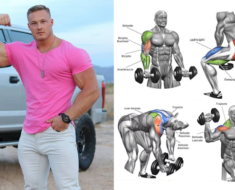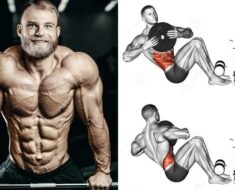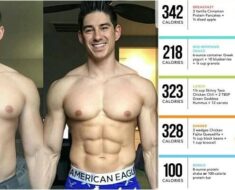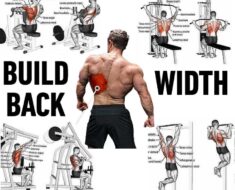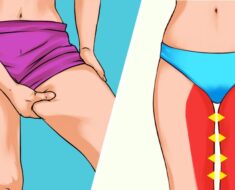At first, a beginner in a fitness room has a difficult time: the amount of information on the network and instructions on Youtube is no wonder to break your head. Where to begin? What to do? And, most importantly, how to do it correctly so as not to catch sidelong glances from other trainees? If you do not want to become the hero of the meme “I can do everything myself,” then read a short educational program for beginners, which was compiled by Ruslan Panov, an expert methodologist of the federal network of fitness clubs X-Fit.
All exercises are divided into 3 types: global, regional and local. They differ in the target muscle groups that are included in the work in a particular exercise, and joint movements.
For locals are exercises that involve less than 1/3 of the entire muscle mass, and there is one-piece movement. For example, flexion or extension of the arms for biceps and, accordingly, triceps.
By Regional are those employing up to 50% of muscles and movement in the joints 2-3. Scoop leg press, horizontal and vertical bar rows, some types of presses.
Global – or in other words, basic – exercises involve more than 50% of the muscles in the body and produce movements in several joints. These are all types of squats, lunges, push-ups, planks, and work on the abdominal muscles.
Have you heard the expression, “Make a base?” This is from this opera. They are present in any kind of training, no matter – functional, interval, strength. Except for cycling (training of varying intensity on stationary bicycles. – Esquire) and some types of dancing. They can be done in the gym, in group programs, and even at home. They are widely used in everyday life, in outdoor sports and games. Thanks to them, you can not only strengthen the muscle frame, but also develop coordination, improve endurance and strength indicators.
Why do basic exercises?
They include a large number of joints and muscles – therefore, they are more energy intensive. The math is very simple: an isolated muscle can spend, say, 10-15 kcal per minute when performing at medium intensity. At the same time, in a basic exercise, it can reach up to 50 kcal – depending on the correct execution, speed and individual characteristics.
Basic exercises include:
Push ups. The exercise is aimed at the muscles of the arms, chest, back, the press in this case acts as a stabilizer. Beginners can do it from their knees, so half the load will be reduced. More advanced ones – on straight legs. In the advanced version, the muscles of the legs are also connected to work. The most important thing in push-ups is the angle of setting the hands in relation to the elbow and shoulder joints: the elbows should not fall out, the hands are strictly under them. Push-ups can be done with a wide grip, where the large chest and biceps are involved, and with a narrow grip – then most of the load falls on the triceps.
Plank.
A unique exercise that engages ALL muscles in the body. The simplest and most effective, requiring no additional equipment, space or equipment. If you don’t know what to do, do the bar. There are several types, depending on the level of fitness of the trainee. Do not forget about the correct technique: on straight arms, the hands, elbows and shoulders are at the same level, on bent arms – the elbow is exactly under the shoulder. The back is not stopped, the lower back is tucked up, does not fall down. Knees are straight, but not “locked”, not arched.
Squat.
In the squat, virtually all muscles in the legs and buttocks are targeted. The muscles of the back, the extensors of the spine, are used as stabilizers. There are many types of exercises with different mechanics of movement. You can find them and study them yourself on the X-Fit Youtube channel.
Lunges.
They act by analogy with the squat. The same muscles are involved. Exercise can be of different types that can be done for a variety of training processes – on the spot, in a step, lunges back, “in scissors”.
Both in the squat and in the lunges, a lowered head, flattening of the knees, a round back are unacceptable – all this can lead to loss of balance, injury to the knees and spine.
“First of all, it is necessary to control the technique. Often, beginners immediately start working at increased intensity, thinking that it is effective. But this is not the case. All joints have certain vectors of movement, and if they are not followed, the exercises become useless and even traumatic. Therefore, when we talk about the beginning of the training path, the most important thing to start with is the formulation of the technique. The study of movement techniques is called biomechanics. It is best to do this with a coach on an individual basis. “
Whether you train at home, in the gym, at the stadium, or on the beach on vacation, incorporate core exercises into your workout. Squats, lunges, push-ups and planks can be used to build a full workout. More advanced ones can use weights, increasing the number of repetitions. The most important thing is the correct technique, then the lesson will be effective.

